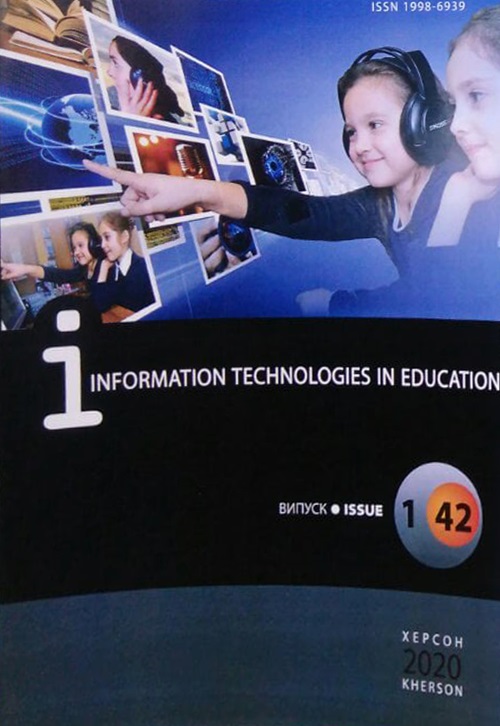SOFTWARE FOR RESEARCH OF DYNAMICS OF PROCESSES
DOI:
https://doi.org/10.14308/ite000713Keywords:
research, process, model, dynamic system, diagram, C# desktop, ZedgraphAbstract
Since Newton research of dynamics of processes consists in construction of corresponding mathematical model and its careful studying. However investigation of any more or less real system is impossible without a computer and information technology. Computer simulation derives from two steps: (i) modeling, i.e. finding a model description of a real system, and (ii) solving the resulting model equations using computational methods. In the natural sciences it is often not so difficult to find a suitable model. On the other hand, due to computer simulations economics has entered the stage of deep transformation of its bases. However in economics the resulting equations are easier to solve, but they are harder to find. Therefore, here it is expedient and convenient to use a computer at the stage of modeling itself, i.e. on the model search stage. The С# desktop application Model specially intends for support process of modeling itself using computer. It is advisable and convenient to use specialized software for numerical experiments, which allows obtaining the model in a subject language, without codes; immediately afterwards all the necessary research tools already tuned to this model; easily modify the model depending on the results of the experiments. It was developed and continuously improved simultaneously and in close relationship with the construction of the theory of the general market model according to the new dynamic paradigm of economics, computational experiments via Model played a major role in the construction of this theory. As a result of this real and hard testing the latest version of Model has now reached some complete form and is submitted in this paper. In particular use of this software in educational process is reasonable: to concentrate attention to very uneasy subject - the process of research
Downloads
Metrics
References
2. Биркгоф, Дж. (1999). Динaмичеcкие cиcтемы. Ижевск: Удмуртcкий универcитет
3. Бенькович, Е.С., Колеcов, Ю. Б., & Cениченков, Ю.Б. (2002). Прaктичеcкое моделировaние динaмичеcкиx систем. Петербург: БХВ.
4. Чарльз, Г.Э., & Дэвид, Э. П. (2007). Дифференциальные уравнения и проблема собственных значений: моделирование и вычисление с помощью Mathematica, Maple и MATLAB. (3-е изд.). Москва: Вильямс
5. Дьяконов, В.П. (2009). Mathematica 5/6/7. Полное руководство. Москва: ДМК Пресс.
6. GianItalo, B., & Lorenzo, C.B. (2015). A dynamic marketing model with best reply and inertia. Chaos, Solitons and Fractals, 79, 145-156
7. Нэш, Т.С. (2008). Ускоренный курс для профессионалов. Москва: Диалектика-Вильямс.
8. Schulz, A.W. (2013). Beyond the Hype: The Value of Evolutionary Theorizing in Economics. Philosophy of the social sciences, 43(1), 46-72.
9. Rosser, J. B., Rosser, M. V., A. Matsumoto (Ed.), F. Szidarovszky (Ed.), & T. Asada Smith (Ed.) (2016). Simonian Bounded Rationality and Complex Behavioral Economics. In , Essays in Economic Dynamics (pp. 3–22). Singapore: Springer
10. Puu, T., & Panchuk, A. (2011). Nonlinear economic dynamics. New York: Nova Science Publishers.
11. Federici, D., Gandolfo, G. (2014). Chaos in Economics. Journal of Economics and Development Studies, 1(2), 51-79.
12. Bischi, G.I., & Lamantia, F. (2012). A dynamic model of oligopoly with R&D externalities along networks. Part I. Mathematics and Computers in Simulation, 84, 51-65.
REFERENCES (TRASLATED AND TRANSLITERATED)
1. Arnold, V. (1978). Ordinary differential equations. Moscow: Nauka.
2. Byrkhof, D. (1999). Dynamic systems. Izhevsk: Udmurt university.
3. Benkovych, E.S., Kolesov, Yu.B., & Senychenkov, Yu.B. (2002). Practical modeling of dynamic systems. Petersburg: BHV.
4. Edwards, Ch.H.,& David, E.P. (2007). Differential Equations and Boundary Value Problems: Computing and Modeling. (3rd ed.). Moscow: Vyliams
5. Edwards, Ch.H.,& David, E.P. (2007). Differential Equations and Boundary Value Problems: Computing and Modeling. (3rd ed.). Moscow: Vyliams
6. GianItalo, B., & Lorenzo, C.B. (2015). A dynamic marketing model with best reply and inertia. Chaos, Solitons and Fractals, 79, 145-156
7. Nesh, T.S. (2008). Crash Course for Professionals. Moscow: Dialetkika-Vyliams.
8. Schulz, A.W. (2013). Beyond the Hype: The Value of Evolutionary Theorizing in Economics. Philosophy of the social sciences, 43(1), 46-72.
9. Rosser, J. B., Rosser, M. V., A. Matsumoto (Ed.), F. Szidarovszky (Ed.), & T. Asada Smith (Ed.) (2016). Simonian Bounded Rationality and Complex Behavioral Economics. In , Essays in Economic Dynamics (pp. 3–22). Singapore: Springer
10. Puu, T., & Panchuk, A. (2011). Nonlinear economic dynamics. New York: Nova Science Publishers.
11. Federici, D., Gandolfo, G. (2014). Chaos in Economics. Journal of Economics and Development Studies, 1(2), 51-79.
12. Bischi, G.I., & Lamantia, F. (2012). A dynamic model of oligopoly with R&D externalities along networks. Part I. Mathematics and Computers in Simulation, 84, 51-65.
Downloads
Published
How to Cite
Issue
Section
License
This work is licensed under a Creative Commons Attribution-NonCommercial-ShareAlike 4.0 International License.






























